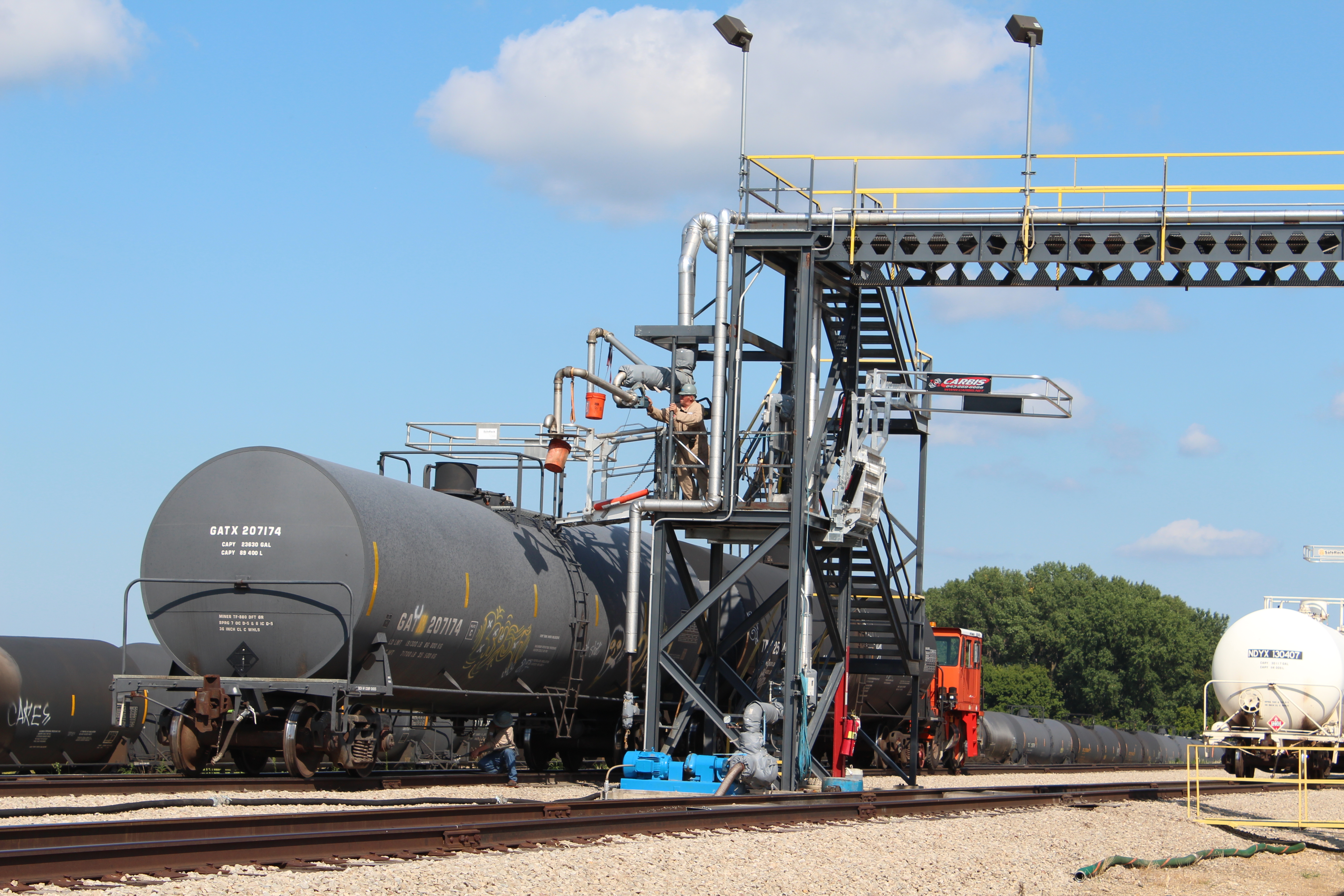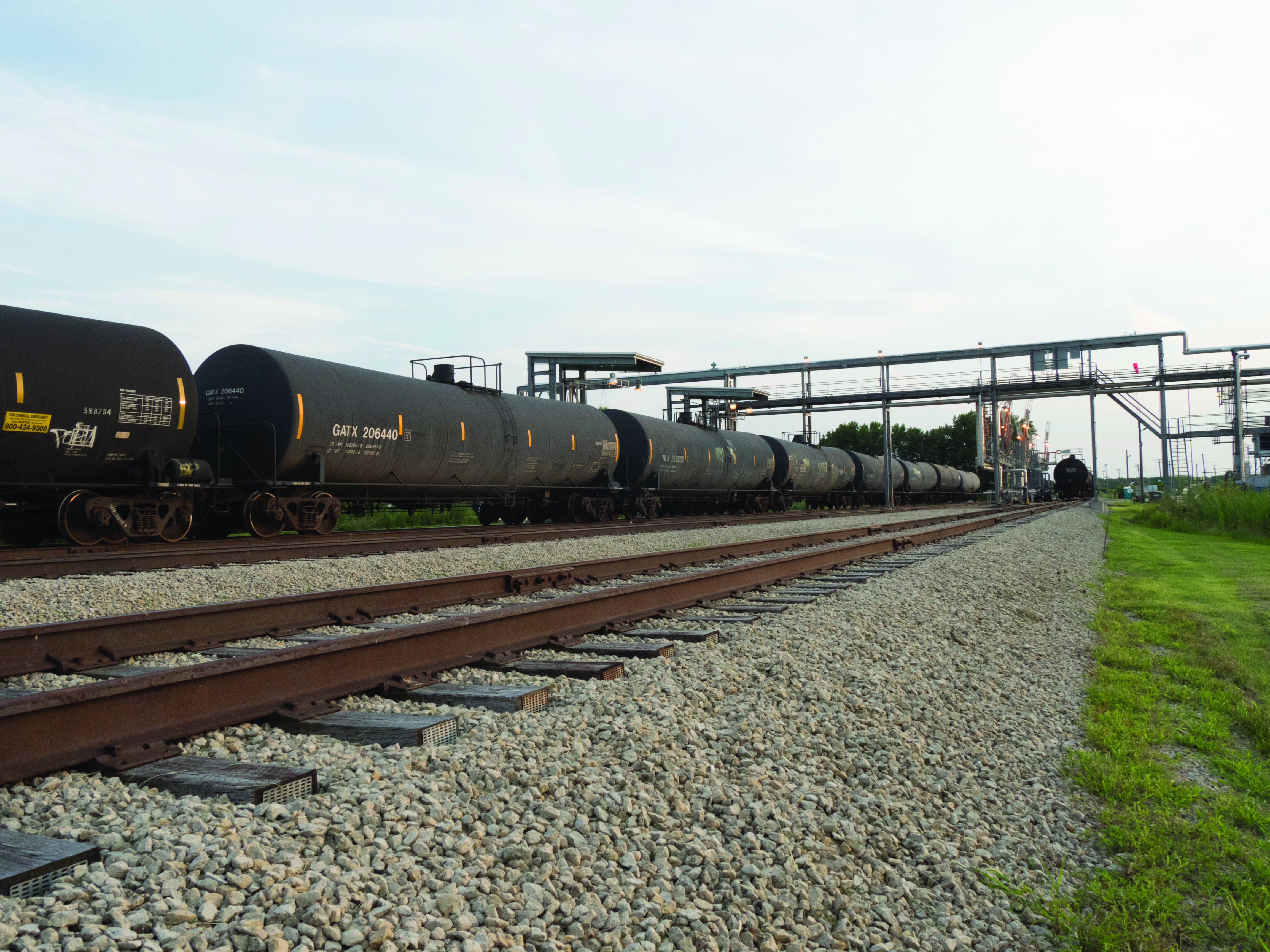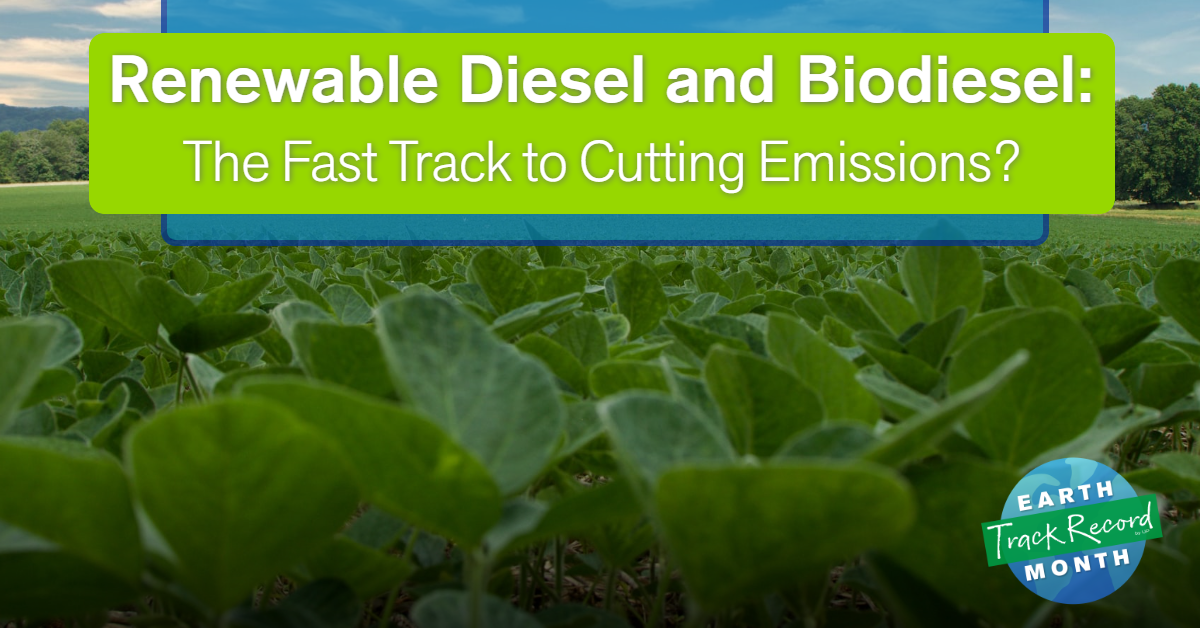Following the passing of the Bipartisan Infrastructure Law, electric vehicles have been getting a lot of attention. In an effort to reduce greenhouse gas (GHG) emissions and address climate change, the bill is intended to fund a national network of electric vehicle (EV) chargers and make upgrades to our nation’s power infrastructure to support them (among other transportation-related projects). While increasing the viability and use of electric vehicles has the potential to dramatically reduce transportation emissions, it’s going to take time — and with climate change looming, people are ready to take action now.
That’s where biofuels come in. Renewable diesel and biodiesel are made from renewable resources turning waste into fuel that burns cleaner than petroleum diesel. Moreover, renewable diesel is a “drop-in” fuel, meaning it can be used in existing diesel engines and requires no new infrastructure upgrades. Biodiesel is often blended with renewable diesel and traditional diesel. In other words, fuel consumers who want to reduce their environmental impact don’t have to wait — biofuels can help them start cutting GHG emissions immediately.
What Is Renewable Diesel?
Renewable diesel is a fuel that is similar to traditional petroleum diesel but is produced from renewable sources like inedible corn oil, soybean oil, animal proteins and used cooking oil. The process for making petroleum diesel and other fossil-based fuels involves removing crude oil from the ground, pumping it into a refinery, and refining it through a heat- and pressure-based process called hydrogenation. Renewable diesel, on the other hand, is made of nonpetroleum renewable resources (waste animal fats and vegetable oils) produced through various thermochemical processes such as hydrotreating, gasification and pyrolysis.
While renewable diesel and petroleum diesel rely on different feedstocks, in the end they perform similarly. That means renewable diesel can be used in existing petroleum pipelines, storage tanks, and diesel engines without modifications. It also means it can be used in diesel engines in its pure form (R100) or blended with petroleum diesel or biodiesel in various ratios, most commonly R20 (a blend of 20% renewable diesel and 80% petroleum diesel) and R5 (5% renewable diesel and 95% of petroleum diesel).
What Makes Renewable Diesel “Renewable”?
Unlike traditional petroleum diesel, renewable diesel is not a fossil fuel. Instead of relying on crude oil (which is pulled from the ground and cannot be “renewed”), it’s made of products that can be grown or produced again, including soybean oil, corn oil, animal proteins and used cooking oil.
What Is Biodiesel?

Tank cars carry biodiesel at Renewable Energy Group's Albert Lea production facility in southeastern Minnesota.
Biodiesel is a fuel that is made from the same renewable resources as renewable diesel but has a different production process called transesterification. Biodiesel is an oxygenated fuel and is often blended at levels of 20 percent and higher. Renewable Energy Group (REG), a leading producer of biodiesel and renewable diesel, blends both fuels together and with petroleum, depending on the customer’s emissions goals.
What Are the Benefits of Using Biofuels?
Renewable diesel and biodiesel come with environmental, economic and sustainability benefits.
Environmental Benefits of Renewable Diesel and Biodiesel
In addition to being made from sustainable sources, renewable diesel and biodiesel also reduce emissions from diesel engines compared to petroleum diesel. Renewable diesel burns cleaner than regular diesel, releasing less carbon. According to the Argonne National Labs GREET 2022 Model renewable diesel can potentially reduce CO2 emissions by up to 68% compared with petroleum diesel, depending on the blend, and biodiesel can reduce emissions by up to 75%.
Since 2011, together renewable diesel and biodiesel eliminated more than 32 million tons of carbon dioxide according to data released by the California Air Resources Board. Comparatively, the use of battery electric vehicles eliminated just over 10 million tons of carbon dioxide, making renewable diesel and biodiesel the fuel types to generate the greatest reduction in transportation emissions.
In 2020 alone, the California Air Resources Board estimates that switching from conventional diesel fuel to renewable diesel and biodiesel eliminated almost 7 million tons of GHG emissions.
Economic and Sustainability Benefits of Renewable Diesel and Biodiesel
Renewable Energy Group’s Nicolas Bulver said that using waste products to make renewable diesel and biodiesel has both sustainability benefits and economic advantages as well.
“Beyond the clear benefits in emissions reduction from using renewable diesel and biodiesel, the thing that I get most excited about with these fuels, as well as the industry overall, is that we take waste products and turn them into a high-quality fuel. Things that would otherwise be disposed of are turned into this world-changing green alternative to fossil fuels,” he said. “I would also be remiss if I didn’t mention the irreplaceable value to farmers and food production that our industry provides. In purchasing corn or soy oil, in addition to waste oils from the food industry that they would otherwise pay to dispose of, we provide an additional income stream to these suppliers. When I really look at the big picture of it all, it fills me with pride in what I do and why I do it.”
Infrastructure Benefits of Renewable Diesel and Biodiesel
Because renewable diesel has a similar chemical makeup as petroleum diesel, it’s a drop-in fuel that can be used in diesel engines without any modifications. This gives companies a way to start reducing their environmental impact immediately without having to invest in converting a truck to run on a different fuel type, buying new vehicles, or establishing new fueling infrastructure, like fuel tanks or charging stations.
“The biggest benefit and advantage of renewable diesel is that it requires ZERO infrastructure changes to implement and meets the same specifications as petroleum diesel, all while providing the emissions reductions that many consumers are striving for,” Bulver said. “Compared to petroleum diesel, renewable diesel aids in the self-ignition of fuel due to its increased Cetane and thus allows for easier starting as well as smoother running engines.”
Biodiesel can also be blended with renewable diesel or petroleum diesel for use in existing diesel engines, which means users do not have to make capital investments in new vehicles.
How Do You Ship Biofuels like Renewable Diesel and Biodiesel?

Tank cars at REG's Seneca, Illinois production facility
Renewable diesel and biodiesel can ship by truck, pipeline or train (see a comparison here). However, shipping by rail may be the best option. Shipping biofuels by train comes with the following advantages:
- One train can move up to 300 trucks worth of product, allowing consumers of renewable diesel (or feedstocks) to move large volumes with ease
- Shipping renewable diesel and biodiesel by rail also makes it possible to take advantage of financial incentives in states like California, Oregon and Washington
- Trains offer their own environmental advantages. Because they are 3-4 times more fuel efficient than trucks, moving freight by train instead of truck reduces GHG emissions by up to 75%.
Renewable diesel and biodiesel travel by train in tank cars, each of which can hold about as much as three trucks. Biofuels can ship by rail even if the origin or destination don’t have tracks, thanks to a process called transloading.
Learn More
To learn more about how to ship biodiesel, renewable diesel or feedstocks like corn oil, soybean oil or tallow by train, answer a few questions and an expert will be in touch.
Related Articles
- The Rise of Renewable Diesel
- Transportation Modes Revealed: A Comprehensive Look
- Rail Car Types Defined
- What Is a Rail Tank Car?
- What Products Can Be Transloaded?
- How Are Products Transloaded?
- Inside Look: How Transloading Works
- Intermodal vs. Transloading
- Rail 101 FAQs
- What Is Mexico Energy Reform?
- How to Access the Mexico LPG Market
- How to Ship Energy Products to Mexico by Rail









